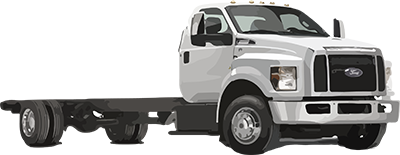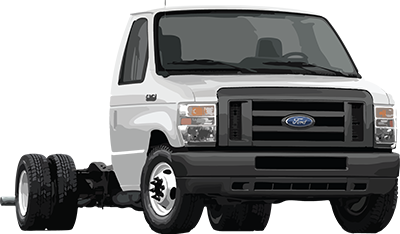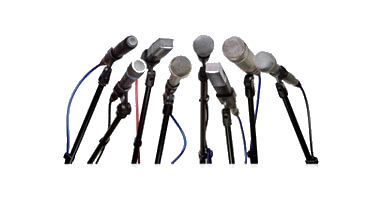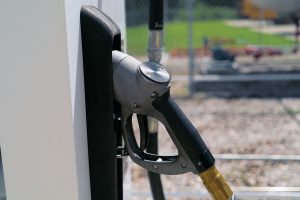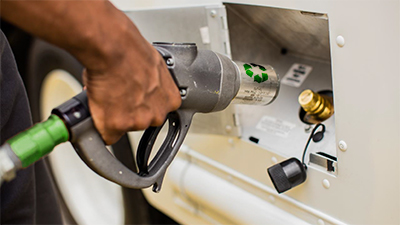Through the Years: The History of Propane
The Discovery of Propane
In 1910, Dr. Walter O. Snelling, a chemist and explosives expert for the U.S. Bureau of Mines, was contacted to investigate vapors coming from a gasoline tank vent of a newly purchased Ford Model T. The automobile owner complained that the gallons of gasoline he purchased became only half-gallons by the time he arrived at his home. To test the vapors, Snelling filled a glass jug with the gasoline from the vehicle. On his way back to the lab, he discovered that volatile vapors were forming in the jug, causing its cork to repeatedly pop out. He began experimenting with these vaporous gases to find methods to control and hold them. After dividing the gas into its liquid and gaseous components, he learned that propane was one component of the liquefied gas mixture. He soon learned that this propane component could be used for lighting, metal cutting, and cooking. This discovery began the propane industry.
From a chemical standpoint, propane (C3H8) is a hydrocarbon. Propane, also known as liquefied petroleum gas (or LPG), is nontoxic, colorless, and virtually odorless. It is a byproduct, or secondary result, of both natural gas processing and crude oil refining.
Propane Goes On-Road
After Dr. Snelling’s discovery of the volatile gas, the interest in propane ignited. On March 31, 1912, the New York Times reported Dr. Snelling’s work showed that “…a steel bottle will carry enough [gas] to light an ordinary home for three weeks.”
Propane’s versatility poured over into the automobile industry in 1913, when propane autogas first appeared as an engine fuel. That same year, Dr. Snelling was granted a patent for his method of producing liquid propane gas.
By mid-century, the industry had expanded to governments and companies converting their fleets to propane autogas-fueled models. In the 1950s, the Chicago Transit authority ordered 1,000 propane autogas buses, and Milwaukee converted 270 taxis to propane autogas. Chevrolet introduced four truck engines in 1965 designed for propane autogas, and the 1970s welcomed the frozen foods delivery service, Schwan’s, as a propane-autogas customer. Nearly 94 percent of Schwan’s fleet vehicles continue to utilize this safe, non-toxic, clean fuel today.
With the adoption of propane as an on-road engine fuel, it has become the most common alternative fuel in the world, powering more than 15 million vehicles. Across the United States, it is the third most widely used fuel, behind gasoline and diesel, and there are more than 270,000 propane autogas fueled vehicles on the road including buses, taxis, delivery vehicles, and other fleet vehicles.
With the public’s interest in reducing our nation’s dependence on foreign oil and reducing harmful emissions into the environment, lawmakers took notice. Propane autogas was listed as an EPA-approved clean alternative fuel in the 1990 Clean Air Act. Two years later, propane was listed again as an alternative fuel in the Energy Policy Act of 1992.
In October 1996, the Propane Education & Research Council (PERC) was established and authorized by the U.S. Congress with the passage of Public Law 104-284, the Propane Education and Research Act (PERA). PERC’s mission is to promote the safe, efficient use of odorized propane gas as a preferred energy source. They receive a ‘check off’ monetary amount with each gallon of propane autogas sold that is used to fund research and development, commercialization, and safety efforts.
In 2007, ROUSH Performance, through a partnership with PERC, developed a dedicated propane fuel conversion system, which led to the release of the 2007.5 to 2008 ROUSH propane autogas Ford F-150 truck. ROUSH executives were energized by how the product performed, both in regard to the environment and economics. Hence, ROUSH CleanTech was launched in 2010 by automotive legend Jack Roush, in direct response to a demand from commercial and public fleets for a viable, inexpensive, safe, and reliable alternative fuel option. Recognizing the broad impact America’s fleet vehicles have on our nation’s carbon footprint, the leaders at ROUSH put their 35 years of automotive heritage to work in creating an alternative fuel vehicle application under the ROUSH CleanTech umbrella. Developed was a line of liquid propane autogas fuel systems for a variety of light- and medium-duty Ford vehicles including the Ford F-150, Ford F-250, Ford F-350, Ford F-450, and Ford F-550 truck series, and the Ford E-150, Ford E-250, Ford E-350, and Ford E-450 cargo, passenger, and cutaway van series. More products are under development.
Propane autogas has seen changes along its journey, both in application and acceptance by lawmakers and automobile industry leaders. The new millennium has provide new opportunities, such as qualifying as an alternative fuel eligible for various federal tax incentives and programs, including those established under the Energy Policy Act of 2005, the Safe Accountable Flexible Efficient Transportation Equity Act of 2005, and the Tax Relief, Unemployment Insurance Reauthorization, and Job Creation Act of 2010. Current federal tax credits are available for up to 30 percent of the cost of installing alternative fueling equipment (not to exceed $30,000) for equipment placed into service before December 31, 2011. Once a new propane-autogas fueling facility is installed, fleet operators may be eligible for a 50 cent per gallon federal tax credit or rebate for every gallon of propane the operator dispenses at their facility. For more information, see Incentives.
Propane autogas is a clean-burning fuel that is environmentally friendly. Proven benefits of propane autogas include a reduction in greenhouse gas emissions by up to 25 percent; 20 percent less nitrogen oxide; up to 60 percent less carbon monoxide; and fewer particulate emissions than using gasoline.
Today’s Propane Market
In the United States, more than 12.6 million households depend on propane for residential uses and by millions of other Americans for transportation, commercial, industrial, and agricultural applications. The industry has grown to $10 billion annually and employs more than 56,000 people. Annually, the United States consumes more than 19 billion gallons of propane for home, agricultural, industrial, and commercial uses. About 90 percent of propane used in the U.S. is produced domestically, and 98 percent of the propane consumed in the U.S. is produced in North America. Up to 56,000 miles of pipeline and more than 6,000 retail dealer locations makes propane autogas a readily available clean-burning fuel that will help the U.S. reduce its dependence on foreign oil and build the economy.
(Some of the information in this article came from the Propane Education & Research Council.)




